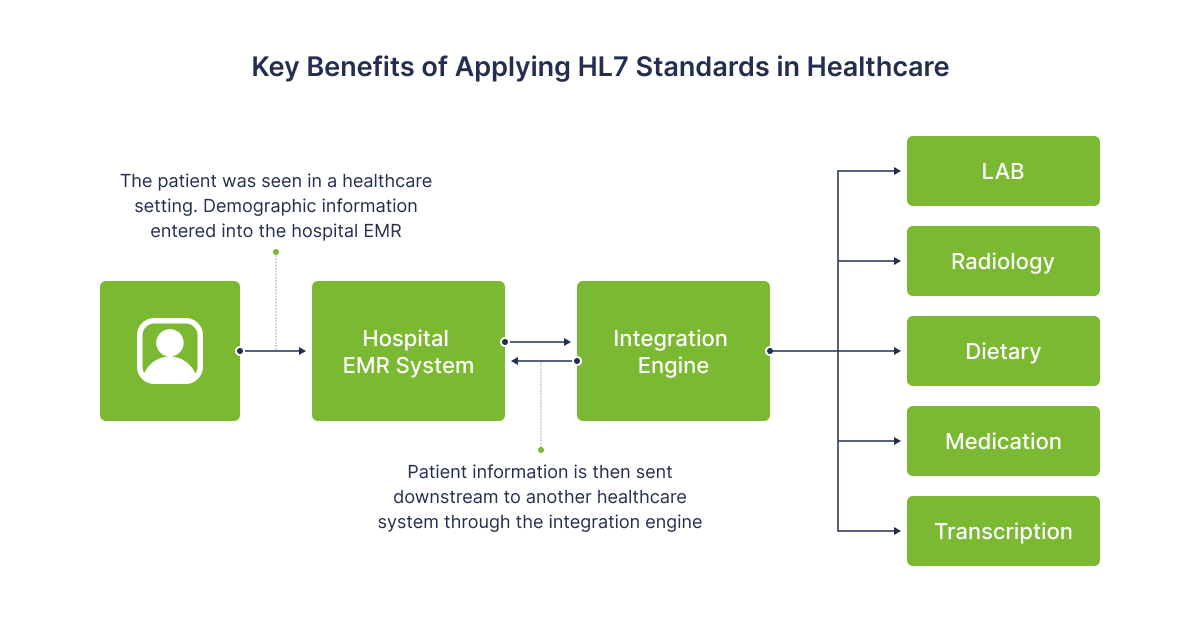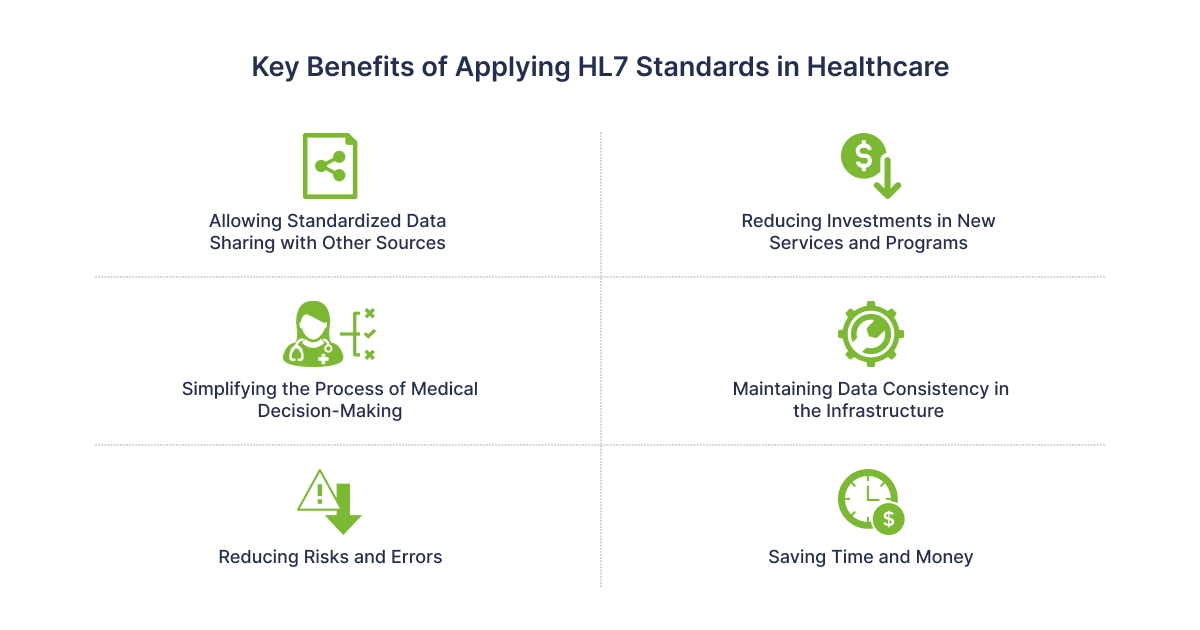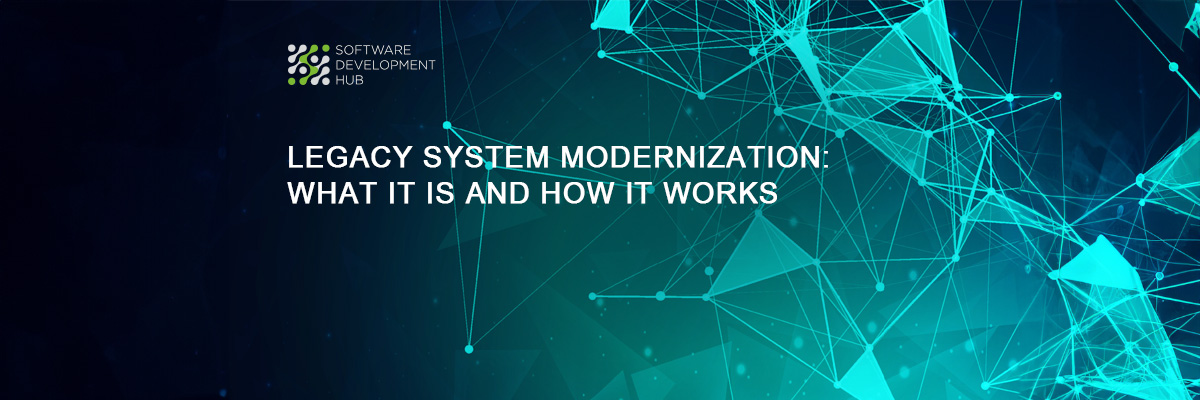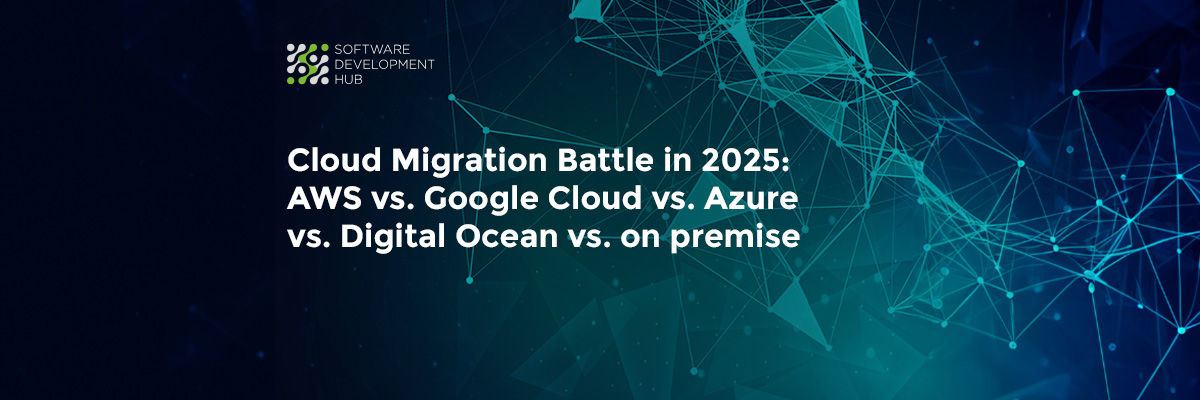HL7 Standard for Medical Applications
Health care organizations' acces to electronic systems enables them to review patient records, prescriptions, and other documentation related to health status and treatments. Difficulties often arise due to the fragmentation of data on the same patient in several institutions. Integration of the HL7 interface will solve these problems. HL7 is a set of formatting standards and guidelines that makes it easier for healthcare providers to communicate and share data.
The role of HL7 integration in healthcare
In the field of medicine, software products and electronic systems allow you to perform many different operations, ranging from billing to telemedicine services, updating patient records.
The possible components of the software are as follows:
- hospital information system;
- electronic medical record;
- laboratory information system;
- radiology information system;
- image archiving and transmission system.
The use of all these technologies complicates the collection of data. Health level 7 allows to include information in health systems, making electronic health records even more useful and efficient to use. The more convenient the exchange of data becomes, the greater the access to information and the more reliable the validity of physicians' decisions are.
HL7 integration via APIs
SaaS applications are increasingly used in the field of online medicine, but the information formats used in them are not recognized by medical systems. For a smoother and hassle-free connection of different data formats, APIs are used, which makes the integration even more scalable.
The peculiarity of APIs is in the standardization and availability of the interface, which simplifies the exchange of data, communication between multiple systems and third-party applications, and even sending reports to government organizations to comply with reporting standards.
Another point is that medical service providers can exchange patients' medical records with other medical institutions in order to make certain decisions more reasonably. The API integrated into the ecosystem of the medical organization is also faster communication with partner structures in real time, with the ability to export, update, retrieve and print data.
Key Benefits of HL7 Standards in Healthcare
The integration of HL7 standards provides a number of benefits for healthcare facilities:
- the consistency of information in the infrastructure is maintained. Data is exchanged without any barriers, infrastructure data is reconciled and software is updated;
- appointment decisions are made quickly and without delay due to available access to data and openness of information;
- the use of information systems with the HL7 interface eliminates the need for investment in new software solutions;
- HL7 standards enable the transfer of standardized, highly secure data to third parties;
- reducing the number of errors reduces the risks and errors in the provision of medical services;
- faster data exchange saves on administration and other operational costs;
- easier use of services by patients online, the ability to сope with a problem without visiting specialists offline and collecting all the necessary documentation manually;
- Improving the quality of patient care by centrally storing all patient health information, prescriptions and data

|
Key Benefits of Applying HL7 |
Explanation |
|
Improved Interoperability |
HL7 standards enable seamless communication and data exchange between different healthcare systems, which can reduce errors and improve patient outcomes. |
|
Enhanced Data Quality |
HL7 standards ensure consistency and accuracy of healthcare data, which improves the overall quality and reliability of healthcare services. |
|
Increased Efficiency |
HL7 standards streamline the healthcare workflow by reducing the need for manual data entry and simplifying the exchange of information between different healthcare systems. |
|
Better Patient Safety |
HL7 standards enable the rapid and accurate sharing of patient information, which can improve patient safety and reduce medical errors. |
|
Facilitates Data Analytics and Reporting |
HL7 standards provide a structured way of exchanging healthcare data, which enables the use of advanced data analytics tools and reporting capabilities. |
|
Supports Regulatory Compliance |
HL7 standards ensure compliance with regulatory requirements, such as HIPAA, which can help healthcare organizations avoid costly fines and penalties. |
|
Enables Telemedicine and Remote Patient Monitoring |
HL7 standards facilitate the exchange of healthcare data between different locations and devices, which is essential for telemedicine and remote patient monitoring. |
Read also: Healthcare Apps: Development Cost & Features

Options for integrating HL7 standards in practice
What specific areas is HL7 integration applicable in?
- Automation of processes to reduce the administrative burden.
- Easy EHR management for new patient admissions.
- Healthcare organizations can coordinate and streamline data exchange, avoiding gaps and errors.
- Submission of statements to regulatory state bodies.
- Possibility to effectively manage nursing shifts in hospitals.
- Planning and reminders for patients about medications, doctor visits.
Software Development Hub has extensive experience in creating software applications for healthcare businesses. When working on a project, our team takes into account the business challenges the client faces and offers safe, efficient solutions to automate processes and scale your operations while reducing costs.
Categories
About the author
Share
Need a project estimate?
Drop us a line, and we provide you with a qualified consultation.







